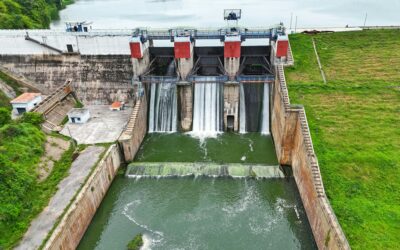Federal funding is still flowing to state and local government officials. Approximately $306 billion appears to currently be in transition. Most of this funding is coming from one of the very first large funding bills passed by Congress – the American Rescue Plan Act (ARPA). The funding is available for a wide variety of projects – everything from efforts to address critical infrastructure needs, to protecting public assets such as stadiums, courthouses, and state parks. And it’s available for dozens of other types of initiatives.
As of May 2023, 41 states have received more than $6.5 billion from ARPA’s Capital Projects Fund. The remaining $3.5 billion will be doled out later this year with the stipulation that it must be obligated by 2024 and used by the end of 2026.
These federal funding allocations have already resulted in huge infrastructure projects that primarily focus on roadways, bridges, water treatment plants, renewable energy projects, airports and public transit authorities. However, investment capital is available for all kinds of diverse projects.
Virginia put $479 million of the state’s approximately $4.3 billion allocation into expanding broadband connectivity. In Oklahoma, an investment of $10 million will be used to revitalize the state’s arts and cultural sector. The objective will be to incentivize the state’s creative workers through talent retention, skills development, and education. New Hampshire’s recent receipt of $122 million in ARPA funding will be used to connect more than 24,000 homes and businesses to affordable, high-speed internet.
Other upcoming projects are similar, and they all require collaboration.

A $155 million affordable housing project in Pawtucket, R.I., is in the planning stage and additional funding is anticipated. The state allocated $250 million to Rhode Island Housing for the development of affordable and supportive housing in Pawtucket. This initiative represents the state’s commitment to meeting critical housing needs. This Central Street Development Project will preserve 32 existing single-family homes and create 30 more new units. It is still in the planning and design phase with no date set for construction to begin.
The city of Glenpool, Okla., is entering the engineering and design phase of what is estimated to be a $44 million project to upgrade an existing water treatment plant. The funding will come from federal ARPA allocations and the effort will include work on a lagoon settlement system that is too small to meet current demands. The project’s focus will be on upgrading the current lagoon to a mechanical wastewater system with upgrades. Construction should be underway soon and a completion date has been estimated to take at least 18 months.
The city of Corpus Christi, Texas, will launch a project to construct a coastal barrier and upgrade the surrounding land. A $14 million federal funding allocation will be used to address flooding in Corpus Christi’s North Beach area. The City Council recently approved the North Beach Strategic Development Plan which includes the implementation of various improvement projects. The plan recommends measures such as a coastal barrier system, elevated access routes, improved stormwater conveyance through a linear park canal and backflow prevention in low-lying areas. The first phase of the project, slated to begin construction in the fall of 2024, will involve open channel and roadside ditch improvements, as well as the construction of a new outfall that will connect to the future Eco Park.
In Tennessee, the city of Chattanooga and the Wastewater Interceptor Sewer System will allocate $16.6 million to address several critical needs in their wastewater system. A comprehensive plan to restore the Wastewater Collection and Transmission System’s capacity, reduce sanitary sewer overflows, improve the reliability of wastewater collection systems, and comply with state and federal regulations is being prepared. Chattanooga’s wastewater project will include the construction of new pump stations and a 5-million-gallon tank, as well as installation of sewer lines. Construction is planned for early 2024.
The state of Delaware was awarded $65 million in ARPA funding for several projects. One interesting recipient of $20 million was the city of Seaford for a collaborative initiative with a local nonprofit. The project, a large adaptive reuse project, involves converting part of a former shopping center into a community education center. The center will include equipment and programming to prepare people for jobs in industrial small-batch manufacturing and health care sectors. Plans are to design the project so that other related-type tenants will also be located nearby. And redevelopment/lease agreements with additional tenants are being worked into the plan. The state will award other funding soon for other projects.
State and local government officials will need to move soon to capture current available funding. And companies interested in collaborating with public officials to do the work should be making themselves known now.
Timing seems to be a critical component of success in almost all initiatives. The same is true with ARPA funding. Billions are available now for state and local government leaders … but the clock is ticking. What funding is not allocated by 2026 will be clawed back and it will be forever gone.






